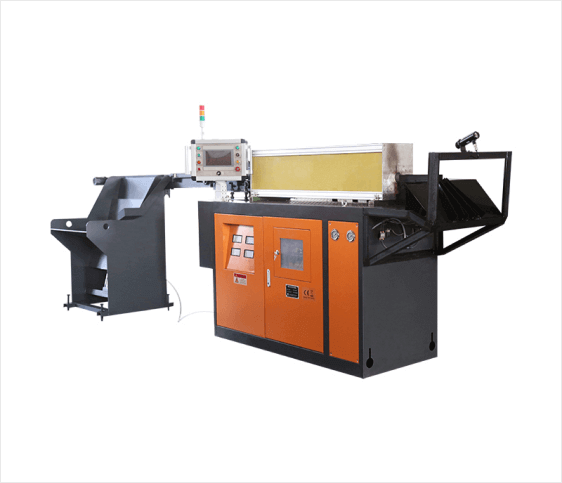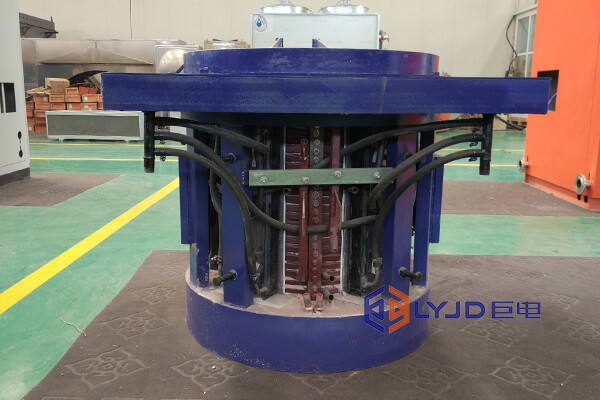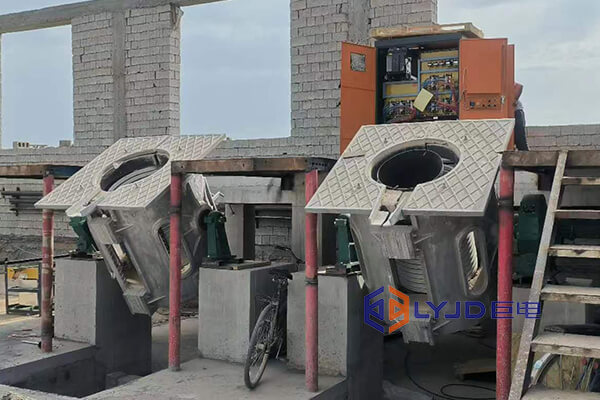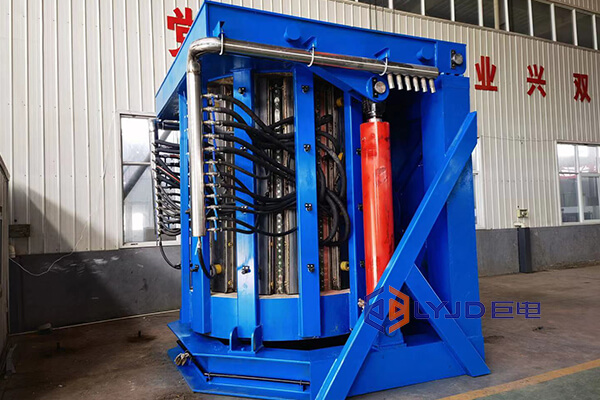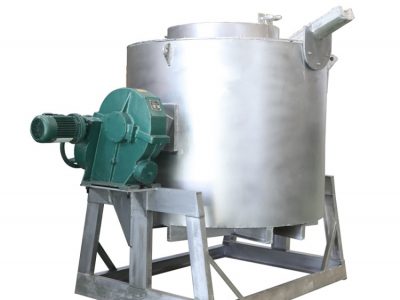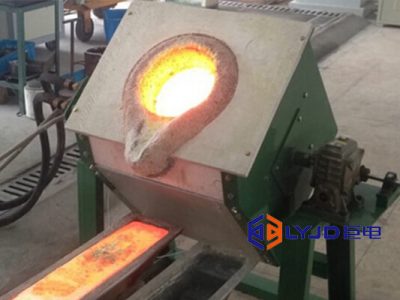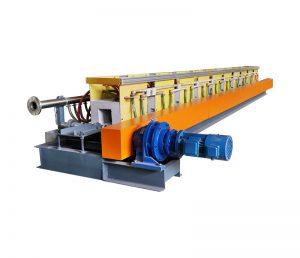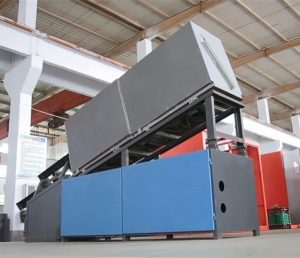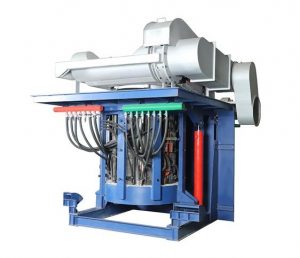Choosing the right size and capacity of a melting furnace for steel is key to ensuring the steelmaking process is efficient, economical and safe. So, how to choose a suitable melting furnace for steel?
Tips for Choosing a Right Melting Furnace for Steel
Determine Production Needs
First, identify your steelmaking production needs, including expected annual production, steel grades to be produced, and required melting rates.
Consider fluctuations and changes in the production process to ensure that the melting furnace selected can handle peak demand in production.
Learn About Types of Melting Furnace for Steel
There are many types of steel melting furnaces, such as induction steel melting furnaces, electric furnaces, open-hearth furnaces, etc. Understand the features, advantages, and applicability of various melting furnaces so you can choose the right type for your production needs.
Consider a melting furnace's energy efficiency, environmental performance, maintenance costs and more to ensure the melting furnace you choose meets your sustainability goals.
Analyze Size and Capacity of the Melting Furnace for Steel
Based on production needs, calculate the required melting furnace capacity. This is usually based on factors such as daily production of molten steel, melting speed and melting cycle.
Consider the size of the melting furnace to ensure it can hold the required volume of molten steel and accommodate fluctuations in the production process.
Evaluate the furnace size, lining material and refractory performance of the melting furnace to ensure that it can withstand high temperatures and erosion and ensure production safety and stability.
Consider Operations and Maintenance
Understand melting furnace operation and maintenance requirements to ensure your staff has the appropriate skills and experience.
Consider the degree of automation and intelligence of the melting furnace to improve production efficiency and reduce labor costs.
Evaluate melting furnace maintenance costs, including refractory replacement, furnace lining repairs, etc., to ensure your budget is reasonable.
Pay Attention to Environmental Protection and Energy Saving
Understand the environmental performance of melting furnaces, including exhaust emissions, noise pollution, etc., to ensure that your production complies with environmental regulations.
Consider the energy-saving performance of the melting furnace, such as energy utilization efficiency, heat recovery, etc., to reduce production costs and improve competitiveness.
Safety And Reliability of The Melting Furnace for Steel
Safety design: Ensure that the design of the melting furnace meets safety standards, including furnace structure, explosion-proof measures, emergency shutdown system, etc.
Failure Prevention and Maintenance: Consider failure prevention and maintenance strategies for melting furnaces to reduce production interruptions and increase equipment service life.
Cost And Return on Investment
Initial investment cost: Compare the initial investment cost of different melting furnaces, including equipment purchase, installation, debugging, etc.
Operating costs: Evaluate the operating costs of the melting furnace, including fuel consumption, maintenance costs, personnel wages, etc.
Return on investment: Calculate the return on investment to evaluate the economics of the selected melting furnace, taking into account initial investment costs and operating costs.
Flexibility And Scalability of The Melting Furnace for Steel
Production flexibility: Choose a melting furnace that can adapt to different production needs and steel grade changes to increase production flexibility.
Scalability: Consider the possible future expansion and upgrade needs of the melting furnace to ensure that it can adapt to the future growth of the enterprise.
When it comes to specific steelmaking melting furnace selection cases, it is difficult to provide a universal case due to differences in factors such as production needs, raw material conditions, and technical levels of different companies.
Background
A small and medium-sized steel company in Uzbekistan, it mainly produces construction steel and structural steel, with an annual output of approximately 100,000 tons. The company wanted to increase production efficiency and reduce energy consumption while maintaining product quality and environmental performance.
Selection Process
Demand analysis: Determine the capacity and type of the melting furnace based on the company's annual output and steel type requirements. Considering small and medium-sized scale and production needs, choose a medium-capacity electric furnace melting furnace.
Technology Assessment: Evaluate the thermal efficiency, melting speed and environmental performance of the melting furnace. Choose to use advanced melting technology, such as smelting reduction technology, to improve production efficiency and reduce energy consumption.
Environmental considerations: Ensure that the exhaust gas emissions from the melting furnace comply with environmental standards, and choose to be equipped with professional exhaust gas treatment systems, such as dust collectors and desulfurization devices.
Safety and reliability: Consider the safety design and fault prevention maintenance strategies of the melting furnace to ensure safety and stability during the production process.
Result
The company chose two 1-ton medium-frequency steel melting furnaces, adopting advanced melting technology and environmental protection measures. By improving production processes and upgrading equipment, the company has successfully improved production efficiency and product quality, while reducing energy consumption and environmental emissions.
Case 2: United Arab Emirates Rebar Production Line
Background
A large steel group in the United Arab Emirates, with an annual output of more than 500,000 tons, it has multiple production bases and advanced steelmaking technology. The group is committed to improving production efficiency and product quality while achieving sustainable development and environmental protection goals.
Selection Process
Demand analysis: Based on the group's production scale and the need for multi-base collaborative operations, multiple large-scale, efficient melting furnaces are selected to meet the needs for high output and diversified steel types.
Technological innovation: Consider adopting the latest melting technologies, such as direct reduction technology, to increase production efficiency and reduce energy consumption. At the same time, intelligent and automation technologies are introduced to improve the automation level and production efficiency of the production process.
Environmental impact assessment: Conduct a comprehensive assessment of the environmental performance of the melting furnace and choose to equip it with advanced exhaust gas treatment systems and noise control measures to ensure that environmentally friendly emissions comply with national standards.
Safety and reliability: Pay attention to the safety design and fault prevention maintenance strategies of melting furnaces to ensure safety and stability in the production process and reduce the risk of production interruption.
Result
The steel group selected eight 15-ton induction steel melting furnaces, using advanced melting technology and environmental protection measures. Through technological innovation and equipment upgrades, the Group has successfully improved production efficiency and product quality, while achieving sustainable development and environmental protection goals.
In Summary
Selecting the appropriate size and capacity of a melting furnace for steel requires comprehensive consideration of factors such as raw material quality and composition, technological innovation and efficiency, environmental impact and emission control, safety and reliability, cost and return on investment, and flexibility and scalability. By thoroughly evaluating these factors, you will be able to select the melting furnace that best suits your production needs, making your steelmaking process more efficient, economical and sustainable.
